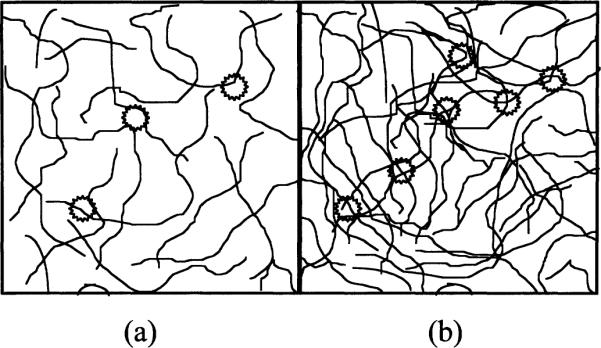FIG. 1.

Loose compared to compact DNA packing. The thin lines represent double-stranded DNA; the stars represent clusters of damage, deposited by ionizing radiation. The number of damage clusters is dependent upon the amount of DNA present. The number of DNA radicals formed per cluster (not the number of clusters) determines the free radical yield. DNA acts as both an electron and a hole scavenger. The clusters of damage in the more loosely packed DNA system (panel a) are in the vicinity of fewer DNA molecules than that of the more densely packed DNA (panel b). Consequently, in the latter case, radicals will tend to localize to relatively more DNA molecules. The separation of radicals on different DNA double strands would tend to hinder combination reactions (and thus promote radical trapping) compared to the localization of radicals to the same DNA double strand.
